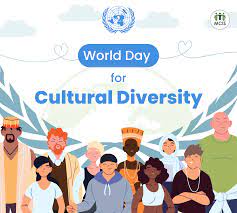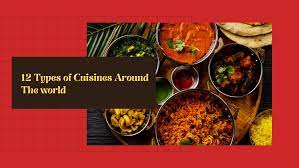Unveiling Armenian Culture: Insights into a Rich Heritage

The Rich Tapestry of Armenian Culture: Insights and Traditions
Armenia, a country steeped in history and tradition, boasts a culture that is as diverse as it is vibrant. From its ancient roots to modern influences, Armenian culture offers a fascinating tapestry of customs, arts, and beliefs that have endured through the ages.
Historical Heritage
Armenian culture is deeply intertwined with its rich historical heritage. The country’s ancient past is reflected in its archaeological sites, such as the UNESCO World Heritage-listed Geghard Monastery and the stunning rock formations of Garni Temple. These relics serve as reminders of Armenia’s enduring legacy.
Culinary Delights
No exploration of Armenian culture would be complete without delving into its culinary traditions. From succulent kebabs to hearty stews, Armenian cuisine is a delightful fusion of flavours influenced by its Middle Eastern and Mediterranean neighbours. Dishes like dolma (stuffed grape leaves) and lavash (traditional flatbread) are staples that showcase the country’s gastronomic prowess.
Artistic Expressions
The arts play a vital role in Armenian culture, with music, dance, and literature holding significant importance. Traditional folk dances like the Kochari and Tariri are lively expressions of joy and celebration, while classical music maestros like Aram Khachaturian have left an indelible mark on the world stage.
Festivals and Celebrations
Throughout the year, Armenians come together to celebrate a myriad of festivals that reflect their cultural identity. Events like Vardavar (the water festival) and Navasard (the new year celebration) are marked by colourful traditions and joyful gatherings that bring communities closer.
Spirituality and Beliefs
Armenia’s spiritual heritage is deeply rooted in Christianity, with the country being one of the first to adopt the faith in the early 4th century. Churches like Etchmiadzin Cathedral stand as testaments to Armenia’s enduring faith and spiritual devotion.
In conclusion, Armenian culture offers a treasure trove of insights into a land brimming with history, creativity, and resilience. It is a culture that continues to captivate hearts and minds around the world, inviting all who seek to explore its wonders.
Exploring Armenian Culture: 7 Key Insights into Traditions and Heritage
- Armenians have a strong sense of community and hospitality, often welcoming guests with open arms.
- Traditional Armenian cuisine is rich in flavours and includes dishes like dolma, kebabs, and lavash.
- The Armenian Apostolic Church plays a significant role in the culture, with ancient monasteries and churches scattered throughout the country.
- Armenians have a deep respect for their elders and value family relationships highly.
- Armenian music is diverse, ranging from traditional folk songs to modern pop and rock genres.
- Apricots hold special significance in Armenian culture as they are considered the national fruit.
- Armenians have a rich history of craftsmanship, particularly known for intricate carpet weaving and pottery.
Armenians have a strong sense of community and hospitality, often welcoming guests with open arms.
Armenians are known for their strong sense of community and hospitality, exemplified by their warm and welcoming nature towards guests. It is a cultural norm for Armenians to greet visitors with open arms, treating them with kindness and generosity. This tradition of hospitality runs deep in Armenian culture, reflecting the values of camaraderie and inclusivity that are cherished within the community. Whether it’s sharing a meal or engaging in heartfelt conversations, Armenians take pride in creating a welcoming environment that fosters connections and meaningful relationships.
Traditional Armenian cuisine is rich in flavours and includes dishes like dolma, kebabs, and lavash.
Traditional Armenian cuisine is a culinary delight that tantalises the taste buds with its rich array of flavours and textures. From the succulent goodness of dolma, the aromatic spices of kebabs, to the comforting warmth of lavash, each dish tells a story of tradition and heritage. The intricate blend of ingredients and cooking techniques in Armenian cuisine reflects the country’s diverse cultural influences and deep-rooted culinary traditions, making it a truly unforgettable gastronomic experience.
The Armenian Apostolic Church plays a significant role in the culture, with ancient monasteries and churches scattered throughout the country.
The Armenian Apostolic Church holds a pivotal position in Armenian culture, exerting a profound influence that resonates throughout the country. Its presence is evident in the multitude of ancient monasteries and churches that dot the Armenian landscape, serving as both spiritual sanctuaries and architectural marvels. These sacred sites not only embody centuries of religious devotion but also stand as testaments to Armenia’s enduring faith and cultural heritage. The intricate carvings, ornate frescoes, and serene settings of these religious edifices offer visitors a glimpse into a rich tapestry of traditions that have shaped Armenia’s identity over millennia.
Armenians have a deep respect for their elders and value family relationships highly.
In Armenian culture, there is a profound reverence for elders and a strong emphasis on the importance of family bonds. Armenians hold their elders in high esteem, viewing them as sources of wisdom, guidance, and experience. Family relationships are cherished and nurtured, with gatherings often centred around shared meals and heartfelt conversations. This deep respect for elders and the value placed on family connections serve as pillars that uphold the rich tapestry of Armenian culture, fostering a sense of unity and belonging within the community.
Armenian music is diverse, ranging from traditional folk songs to modern pop and rock genres.
Armenian music is a vibrant reflection of the country’s rich cultural heritage, encompassing a wide spectrum of styles and genres. From soul-stirring traditional folk songs that have been passed down through generations to the dynamic sounds of modern pop and rock, Armenian music captivates audiences with its diversity and creativity. Whether it’s the haunting melodies of ancient instruments or the energetic beats of contemporary compositions, Armenian music showcases a blend of tradition and innovation that resonates with listeners worldwide.
Apricots hold special significance in Armenian culture as they are considered the national fruit.
In Armenian culture, apricots hold a special significance as they are revered as the national fruit. Known for their luscious flavour and vibrant colour, apricots symbolize abundance, fertility, and prosperity in Armenian traditions. The cultivation of apricots has deep roots in the country’s agricultural history, showcasing the importance of this fruit in shaping Armenian cuisine and cultural practices.
Armenians have a rich history of craftsmanship, particularly known for intricate carpet weaving and pottery.
Armenians have a longstanding tradition of craftsmanship, renowned for their exquisite skills in intricate carpet weaving and pottery. The art of carpet weaving has been passed down through generations, with each rug telling a unique story through its vibrant colours and intricate patterns. Similarly, Armenian pottery reflects the country’s artistic heritage, with artisans creating stunning pieces that blend traditional techniques with modern designs. These crafts not only showcase Armenia’s rich cultural heritage but also serve as a testament to the creativity and skill of its people.








